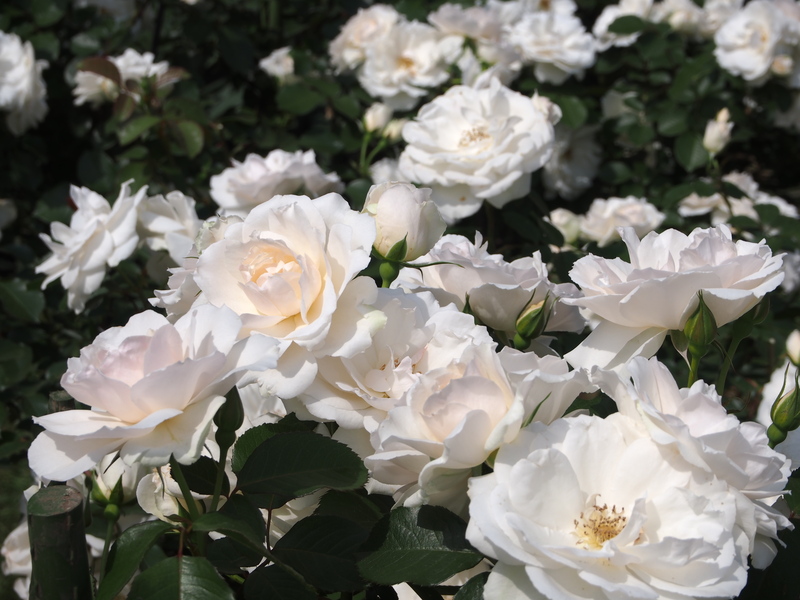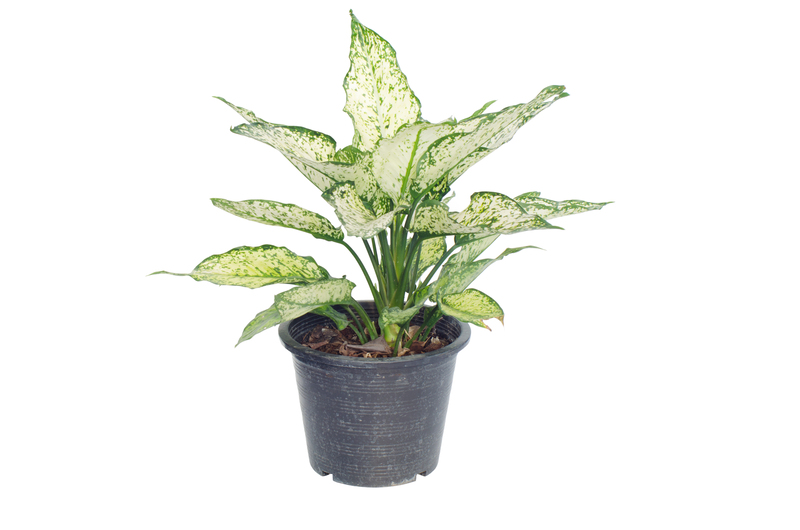Get Creative with Unique Plants for Eye-Catching Window Box Displays
Window boxes are a fantastic way to add instant charm, color, and life to your home's exterior or interior. While classic blooms like petunias and geraniums never go out of style, why not make your home stand out with unique window box plants and bold design choices? This article will provide thorough guidance on choosing, arranging, and caring for eye-catching window box displays that are sure to turn heads and spark conversation.
Why Choose Unique Plants for Your Window Boxes?
Traditional window box flowers have timeless appeal, but introducing uncommon and creative plant selections can transform an otherwise simple display into a sophisticated and memorable sight. Here are some compelling reasons to experiment with creative window box ideas:
- Personalized Style: Custom plant combinations let you express your individuality and elevate your home's curb appeal.
- Seasonal Interest: Unique plants can provide continuous interest from spring through fall, even offering year-round beauty.
- Pollinator Attraction: Exotic blossoms may invite butterflies, bees, and hummingbirds.
- Low Maintenance: Many not-so-common picks are resilient, drought-tolerant, or require minimal care.
- Conversation Starters: Distinctive foliage and flowers are sure to inspire admiration and comments from neighbors and guests.

Best Creative Plants for Stunning Window Box Displays
To get creative with unique plants for window boxes, mix and match textures, colors, and shapes for real impact. Here's a list of less commonly used, yet visually arresting plants perfect for unforgettable displays:
1. Succulents and Cacti
- Burro's Tail (Sedum morganianum): Cascading, quirky, and beautifully textured.
- String of Pearls (Senecio rowleyanus): Beaded trailing vines for modern aesthetics.
- Miniature Prickly Pear (Opuntia microdasys): Playful paddles that add height and eccentric forms.
*Tip: Pair succulents with minimalist planters for a contemporary look and add gravel for perfect drainage.
2. Ornamental Grasses
- Blue Fescue (Festuca glauca): Cool-toned spiky grass with year-round appeal.
- Purple Fountain Grass (Pennisetum setaceum 'Rubrum'): Category-defining arching foliage with dramatic purple hues and feathery plumes.
- Japanese Forest Grass (Hakonechloa macra 'Aureola'): Soft, flowing strands of gold and green.
Grasses add movement and texture, complementing traditional blooming companions or standing alone as statement pieces.
3. Edible Varieties with Ornamental Flair
- Purple Basil (Ocimum basilicum 'Purpurascens'): Striking purple leaves with culinary uses.
- Rainbow Swiss Chard: Colorful stems and leafy greens for artistic arrangements and fresh salads.
- Strawberry Plants: Glossy green leaves, charming white flowers, and sweet rewards.
- Nasturtiums: Peppery leaves and edible, vibrant flowers to add both flavor and flair.
4. Trailing and Climbing Unusual Species
- Black-Eyed Susan Vine (Thunbergia alata): Fast-growing with bright, eye-grabbing blooms.
- Sweet Potato Vine (Ipomoea batatas): Chartreuse or deep purple foliage that tumbles dramatically over window box edges.
- Wave Petunias: Not your ordinary petunia, these create lush, trailing layers of color and volume.
5. Bold Foliage Plants for All-Season Interest
- Coral Bells (Heuchera): Striking foliage in various shades--copper, purple, silver, and lime.
- Coleus: Endless leaf patterns and colors--perfect for shady spots.
- Polka Dot Plant (Hypoestes phyllostachya): Energetic speckled leaves in pink, red, or white.
6. Tiny Trees and Shrubs for Window Boxes
- Dwarf Alberta Spruce: Miniature conifer for year-round green structure.
- Boxwood: Compact and classic; easy to shape for a tailored look.
- Bay Laurel (Laurus nobilis): Both attractive and edible, offering fragrant foliage for cooking.
Tip: Use dwarf evergreens as centerpieces and surround with colorful trailing or low-growing plants for depth.
How to Design a Unique Window Box Display
Creating eye-catching window box displays with unique plants is both an art and a science. Here's how you can ensure your box stands out:
Follow the "Thriller, Filler, Spiller" Formula
- Thriller: Eye-catching, upright or dramatic plant (e.g., a dwarf evergreen, tall grass, or focal bloom).
- Filler: Plants that add fullness and integrate the whole arrangement (try coleus, dwarf ferns, or polka dot plants).
- Spiller: Trailing plants that cascade over the edge for softness (such as sweet potato vine, string of pearls, or trailing nasturtiums).
Play with Color and Texture
- Combine foliage of contrasting colors and shapes. For example, pair purple-leaved plants with lime-green and silver ones.
- Mix smooth, glossy leaves with fuzzy or feathery textures for visual intrigue.
- Don't shy away from variegated or patterned plants--they can be the stars of your display!
Think Seasonally for Year-Round Appeal
- In spring, try tulips, daffodils, or pansies alongside unusual annuals.
- Summer is ideal for succulents, vibrant coleus, and heat-loving annuals.
- For autumn, add ornamental kale, dwarf evergreens, and tiny ornamental grasses.
- Winter window boxes can shine with evergreens, berried shrubs, holly, or decorative branches.
Incorporate Decorative Elements
- Try inserting miniature garden ornaments, river stones, driftwood, or decorative stakes for a custom, creative touch.
- Add fairy lights for nighttime charm or small figurines to fit a holiday or fairy garden theme.
Window Box Display Ideas by Home Style
Matching your plant choices to your home's architecture is a clever way to harmonize both style and space. Here are some ideas:
Cottage Chic
- Blend trailing sweet peas with English daisies, ferns, and miniature roses.
- Add herbs such as lavender or thyme for fragrance.
Modern Minimalist
- Use geometric planters and plant succulents with ornamental grasses.
- Consider monochrome schemes, like all silvery-blue or all green.
Rustic and Country
- Combine edible herbs, swiss chard, and nasturtiums with wildflowers.
- Use weathered wooden window boxes for authenticity.
Urban Jungle
- Create lush, dense plantings with caladiums, ferns, coleus, and trailing pothos.
- Sprinkle in quirky succulents or bold-leaved tropicals for extra punch.
Tips for Planting and Maintaining Unique Window Boxes
To ensure your creative window box displays thrive, keep these best practices in mind:
Choose the Right Box and Soil
- Ensure window boxes have drainage holes to prevent root rot.
- Opt for high-quality, lightweight potting mix rich in organic material.
- Consider self-watering window boxes for easier maintenance.
Catering to Sun, Shade, and Wind
- Group plants according to light preference--sun-lovers like succulents or herbs need south or west exposures, while ferns and coleus suit shadier windows.
- In high-wind locations, choose sturdy, low-growing species and avoid tall or top-heavy plants.
Watering and Feeding
- Window boxes dry out quickly, especially with unique foliage plants--check soil daily in summer.
- Fertilize every 2-4 weeks during the growing season with a balanced or slow-release fertilizer.
- Remove faded flowers (deadhead) and trim spent leaves to encourage new growth and tidy appearance.
Pest and Disease Prevention
- Inspect leaves regularly for aphids, spider mites, and fungus.
- Give plants adequate space for airflow and avoid wetting foliage late in the day.
- Promptly remove any diseased material to keep boxes healthy.
Seasonal Refresh
- Swap out plants seasonally to keep displays vibrant and on-trend.
- Use ornamental branches, berries, or evergreens as accents in winter.
- Consider replanting window boxes entirely in late fall or early spring for peak performance.

Frequently Asked Questions about Unique Window Box Plants
Can I mix edible and ornamental plants in a window box?
Absolutely! Herbs, miniature greens, and edible flowers like nasturitum blend beautifully with ornamental foliage and blooms. Just be sure any plant chemicals or pesticides are food-safe if you plan to eat from your window box.
What are the best low-maintenance plants for window box displays?
Succulents, sedums, dwarf evergreens, and ornamental grasses all require minimal watering and are drought-tolerant, making them excellent choices for easy-care but creative window boxes.
How many plants should I put in my window box?
A good rule for a standard 24-30" box is around five to seven small or medium plants. Do not overcrowd--allow enough space for air to circulate and for plants to grow.
How can I make my window box display last through different seasons?
- Use a base of perennials and evergreens for year-round structure and refresh annuals in spring/summer.
- For winter, add in pine boughs, holly, or decorative twigs for color and dimension.
- Switch out tired plants seasonally to keep the display fresh and vibrant.
Conclusion: Let Your Imagination Bloom
Window boxes are more than just a place for flowers--they're your garden's calling card. By selecting unique plants and experimenting with unexpected color, texture, and shape combinations, you'll create eye-catching window box displays that bring lasting beauty and delight throughout the seasons. Remember, there are no strict rules: mix edibles with ornamentals, play with bold foliage, and don't be afraid to show your personality. With thoughtful care and a dash of creativity, your window boxes can become the envy of all who pass by!
Start planning your creative window box today--and enjoy a fresh vista every time you open your window.